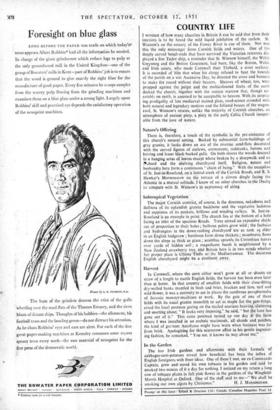COUNTRY LIFE
I WONDER of how many churches in Britain it can be said that from their interiors is to be heard the wild liquid jubilation of the curlew. St. Winnow's on the estuary of the Fowey River is cne of them. Nor was this the only messenger from Cornish fields and waters. One of the deeply carved bench-ends that have survived the Victorian restorers dis- played a fine Tudor ship, a reminder that St. Winnow himself, the Welsh Gwynnog and the Breton Gouzenou, had been, like the Breton, Welsh and Irish saints, who made Cornwall their Thebaid, a stout seafarer. It is recorded of him that when his clergy refused to beat the bounds of the, parish on a wet Ascension Day, he directed the cross and banners to make the round without their bearers. Sheaves of wheat, too, were propped against the pulpit and the multicoloured fruits of the earth decked the church, together with the outsize marrow that, though un- eatablz on earth, is assumed to be acceptable to heaven. With its surpris- ing prodigality of late mediaeval stained glass, rood-screen crowded with both natural and legendary motives and the foliated bosses of the wagon- roof, St. Winnow's retains, unlike the majority of Cornish churches, an atmosphere of ancient piety, a piety in the early Celtic. Church insepar- able from the love of nature.


































 Previous page
Previous page